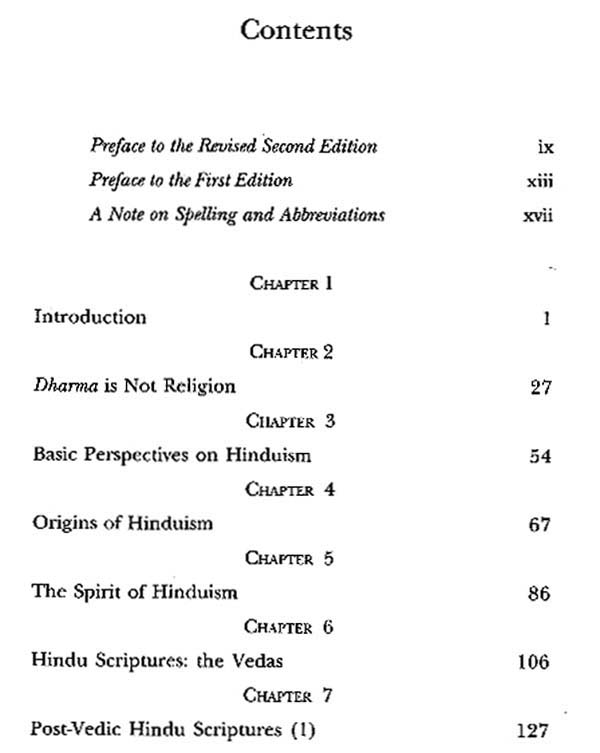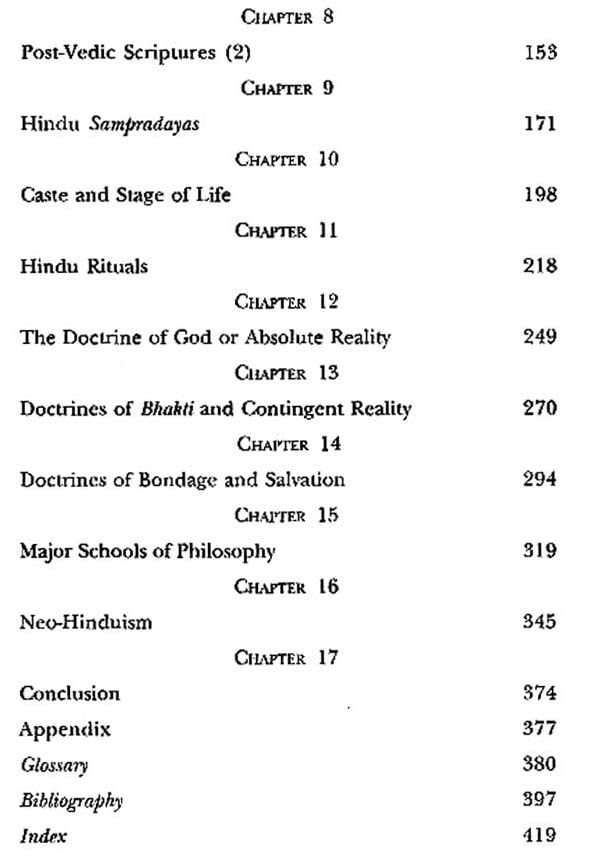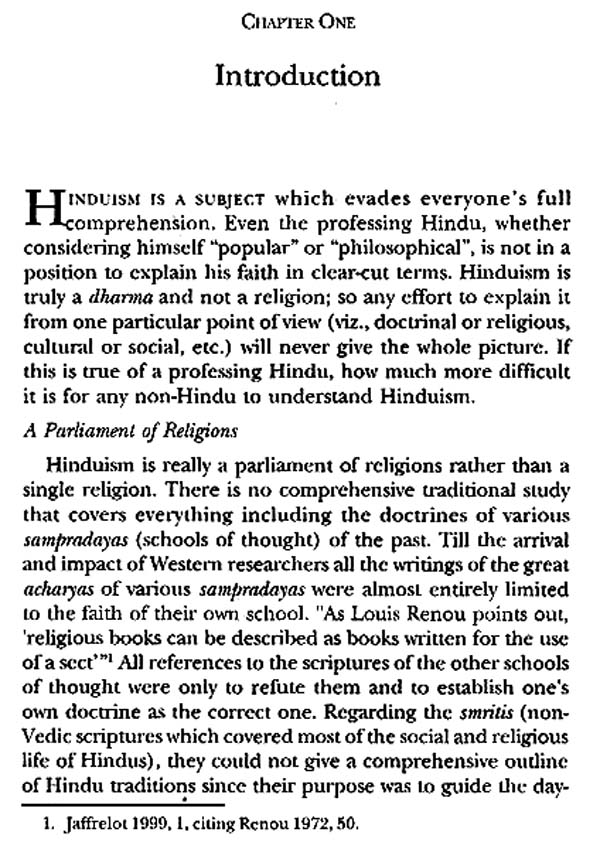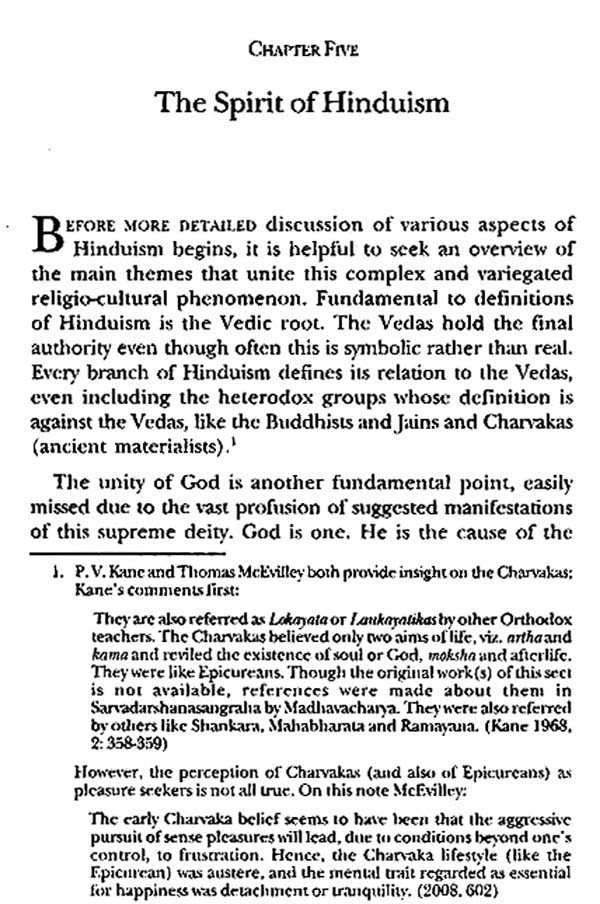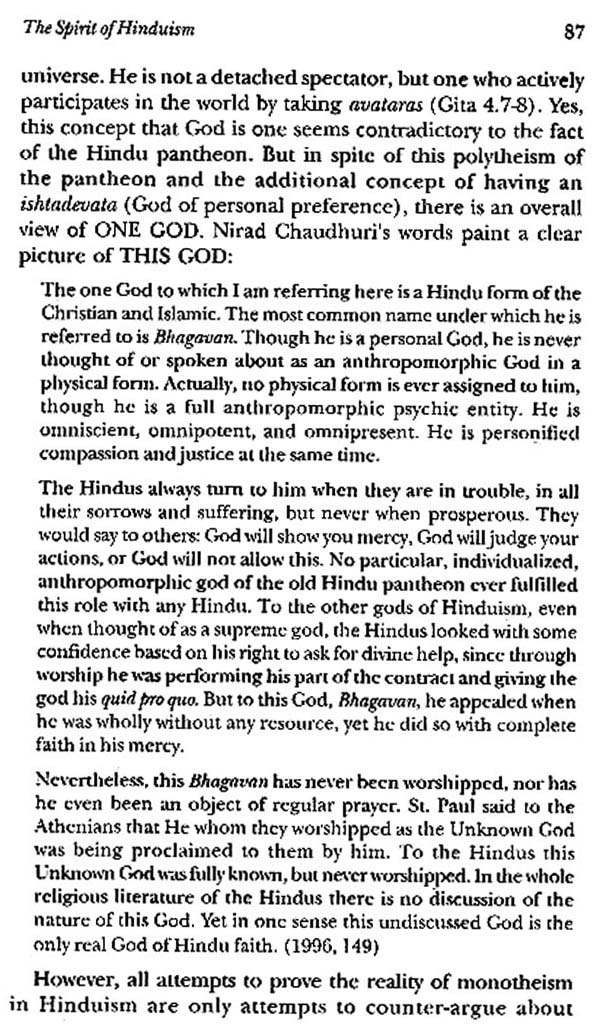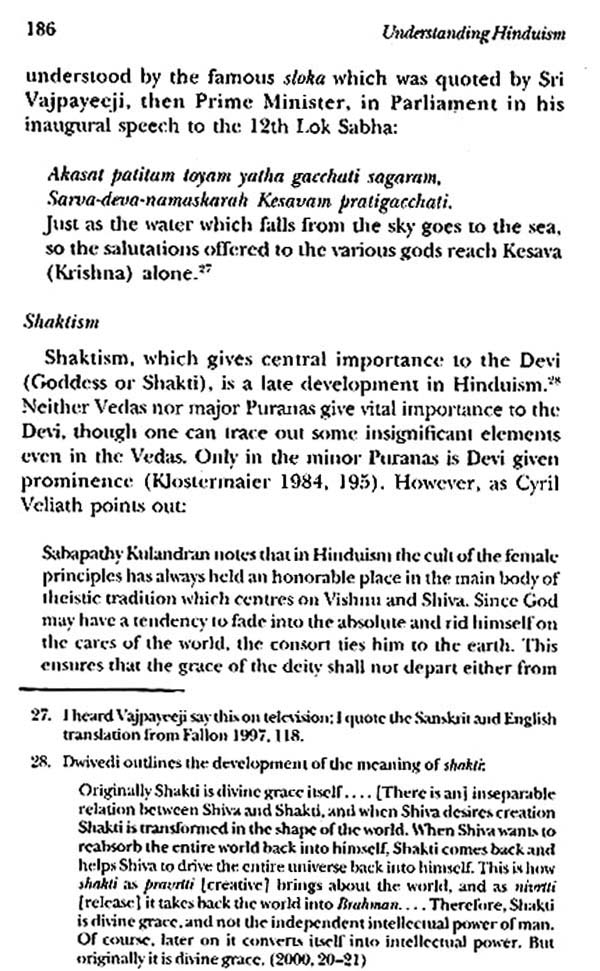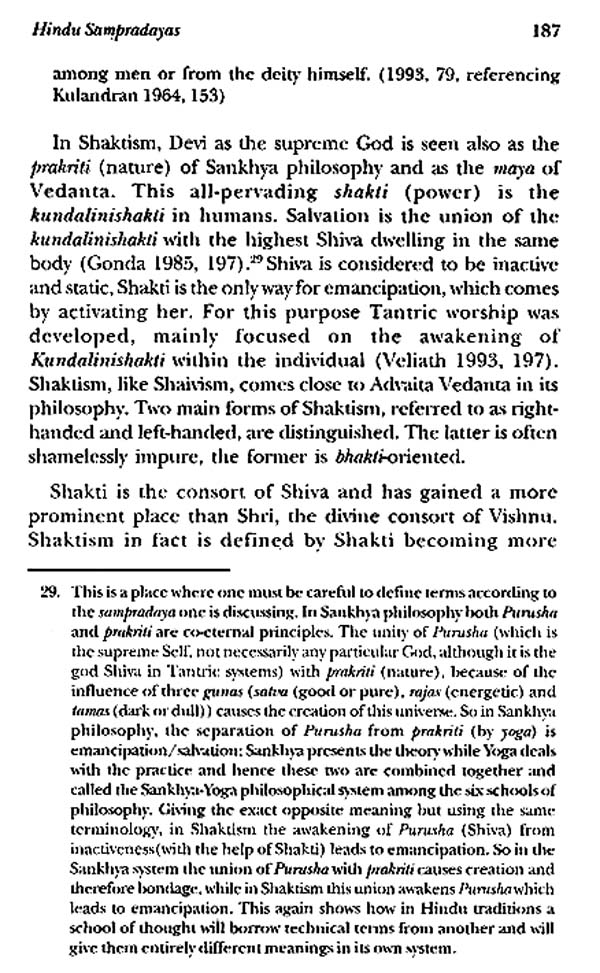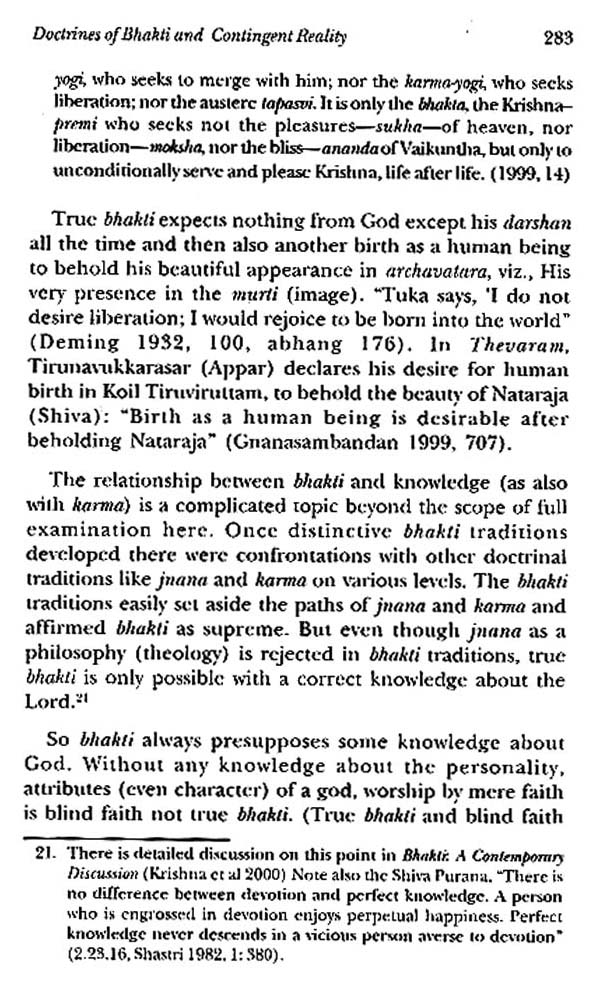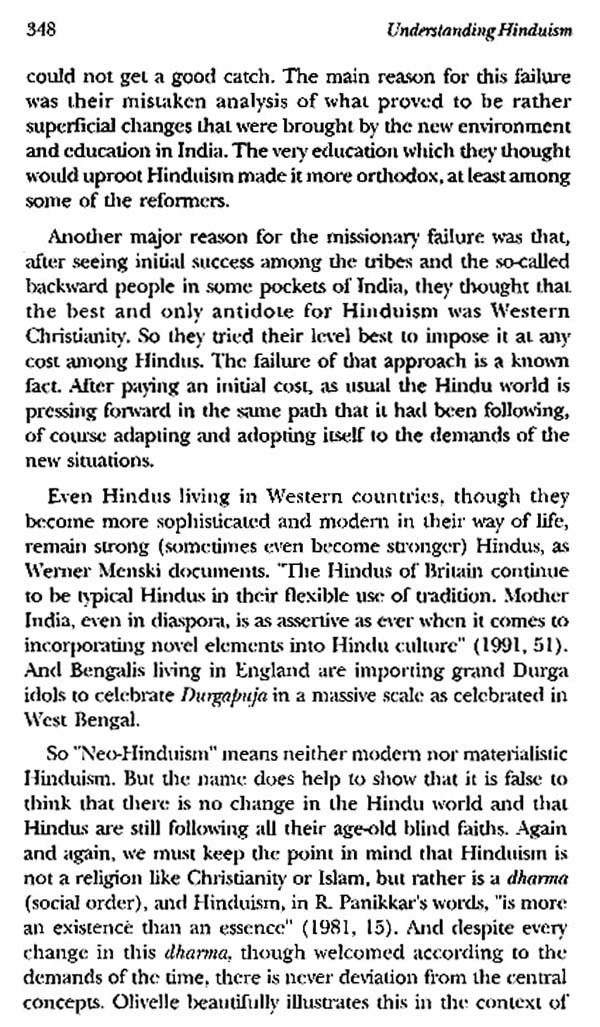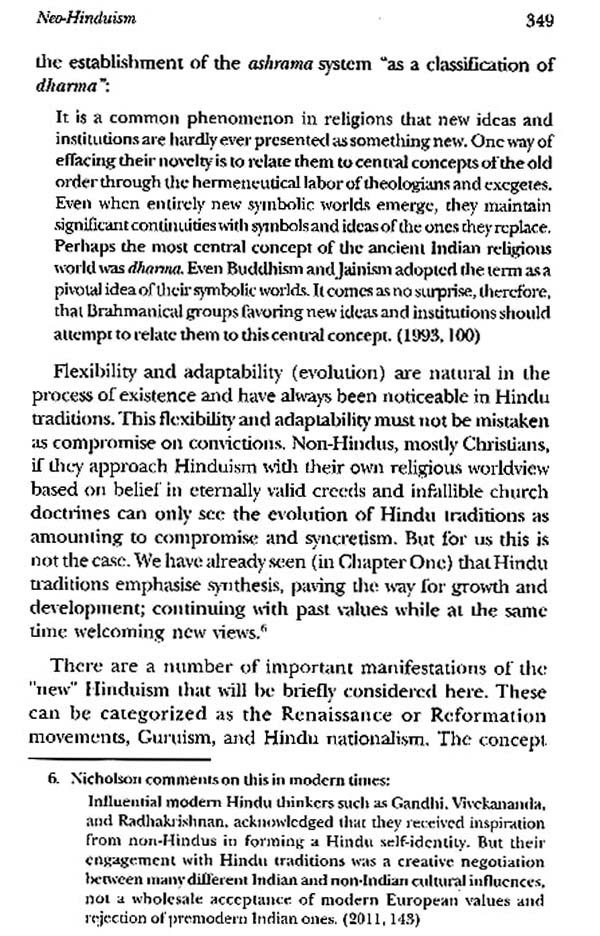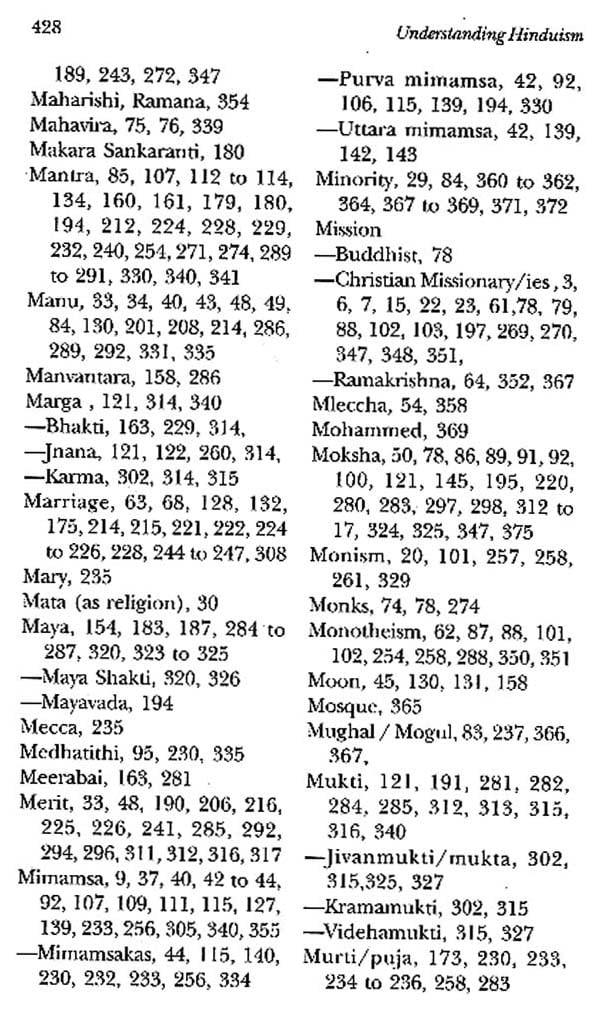
Understanding Hinduism
Book Specification
| Item Code: | NAV645 |
| Author: | Dayanand Bharati |
| Publisher: | MUNSHIRAM MANOHARLAL PUBLISHERS PVT LTD |
| Language: | English |
| Edition: | 2019 |
| ISBN: | 9788121511421 |
| Pages: | 440 |
| Cover: | HARDCOVER |
| Other Details | 9.00 X 6.00 inch |
| Weight | 640 gm |
Book Description
Understanding Hinduism is a creative attempt to connect scholarly research with the daily life of Hindu devotees. It is a true introduction to the complexity of Hindu phenomena, discussing the basic meaning of "Hinduism" and surveying its origins, scriptures, rituals, doctrines and modern trends.
Its author is deeply in touch with the issues and concerns of modern Hindus and as a reformer seeks to bridge the chasm between objective scholarship and Hindu practice. Though affirming diversity he is not afraid to censure or commend, but does so in light of careful historical and sociological analysis. His focus is always on the practical life of devotees.
The author hopes this hook will impact India's modem generation, which is adrift from its rich cultural heritage. Scholars will be alerted to practical Hindu concerns. Scholarly perspectives will stimulate and help the devotee.
Dayanand Bliarati's origins are in Tamil Nadu, where he stil spends most of his time. He is no armchair academic, rather a pilgrim and continues to travel extensively around India, interacting with fellow pilgrims of manifold persuasions. He enjoys plants and gardening almost as much as books, reading, and writing Poems in Tamil.
CHANGE AND CONTINUITY is the mark of our civilization. While continuity with the past helps us to have a strong foundation for our identity as Indians, change opens new avenues to integrate new ideals into our civilization. We often hear that "change" is the only thing that remains "unchanging", yet every new idea or ideal challenges our identity. Instead of losing our past we must use new insights to express ourselves in new. ways. Thus, new research and writing may force us to rethink several of our (past) views, yet they can never uproot our basic Indian identity in any way.
Take caste, for example, one of the benchmarks of our civilization. In spite of new views, interpretations, challenges and even the question of its need and relevance anymore for our social identity in the present trend of internationalism, its grip and purpose (both good and bad) remain strong, now serving as a platform for the political mobility of many (caste) groups. Come what may, in spite of all the challenges, this one identity of our civilization will continue to exercise its authority in the coining several centuries. How we will evolve as a distinct civilization is a huge question; maintaining touch with our past will help us to keep a firm footing to serve the needs of not only Indians (both here in India and outside) but also all of humanity. In the end, we desire that all might have a meaningful life as human beings, recognizing various legitimate (birth) identities in the new scenario of post-modernity, where difference is accepted and pluralism is celebrated. On the importance of both past and present Amartya Sen says,
The interpretation of India's past cannot but be sensitive to the concerns of today. Our identities cannot be defined independently of our traditions and past, but this does not indicate a linear sequence whereby we interpret our past first, and then arrive at our identity, equipped to face contemporary issues. On the contrary, our reading of the past and understanding of the present are interdependent, and the selection criteria that are central to interpreting the past have to take note of the relevance of the different concerns in the contemporary world. While we cannot live without our past, we need not live within it either. (1996, 38)
Though a decade has passed since the first edition of this book and new scholarly research has helped me to "change" some of my views on a few points, there remains "continuity" both in the basic thesis of "Understanding Hinduism" and in my own spirit of enquiry. The entire text of the book has been reworked with new analysis from more recent scholarship. The two longest chapters from the first edition have both been divided into three chapters, but the basic outline of the text remains the same, as does the basic interpretative framework.
I have taken the opportunity in this new edition to update the system of cross-referencing so that the book now conforms to modern standards, and referenced items should be more easily traced by readers. I have also updated the spelling of "Brahmin," which has always been one of the odder British creations. In conformity with current scholarship I now use Brahman, and have taken the liberty of changing the spelling even in quotations. This spelling creates a problem in English, as Brahman as caste name and Brahman as universal spirit do not look different (the difference is in the first "a" being long in the caste name). To make the distinction clear, Brahman as universal spirit will be italicized throughout the book!
Again following current scholarship, I have removed from my text all definitions based on the etymological history of words, excepting a few allusions related to the historical development of meanings. Modem linguistics has exploded the idea that some latent meaning of a word is hidden in its ancient usage, yet the habit of tracing roots lies deep in Orientalist scholarship and influenced my first edition in various places. I have also changed numerous references to "Hinduism" to "Hindu traditions". This is in line with the thrust of the book which is on the diversity of "Hinduism" even though there is a measure of complex and nuanced unity as well.
I must again thank many scholars, whose work is duly acknowledged in the following pages, for demonstrating their seva to India and for helping us as Hindus to understand our identity. I am also again thankful to Sri Ashok Jainji for coming forward to print this revised second edition. I am thankful to my shishyas for the revision of this second edition and also the help to bring it out. My special thanks to Rajesh, who edited the book and thoroughly reworked this revision. Some of my numerous friends who helped with proofreading disliked the abundance of footnotes, but I am hesitant to remove any of that material. Some who are true beginners in the study of Hinduism might perhaps just ignore the footnotes on their first reading of this text. Finally, I feel blessed to have my mother, Srimathi S. Mangalam, with me (in our ashram) to do seva to her and also to receive her blessing to bring forth this revised edition.
**Contents and Sample Pages**
